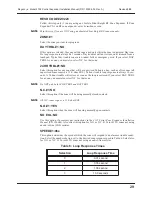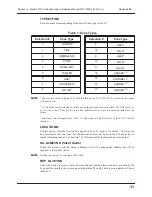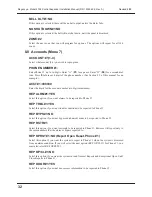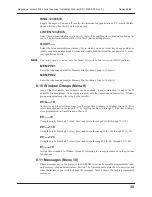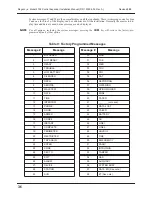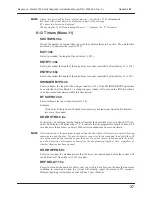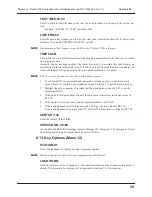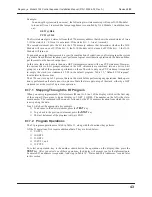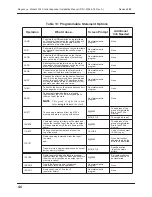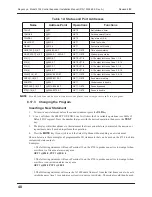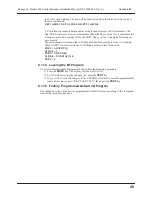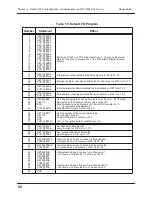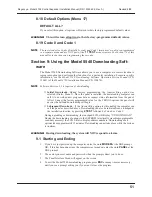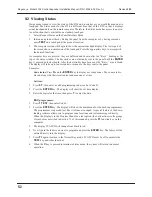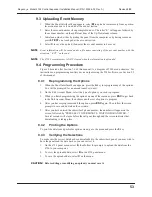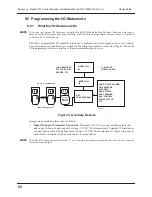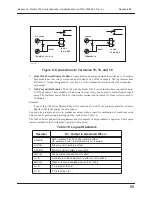
Regency
®
Model 4724 Control Expander Installation Manual (P/N 150596-02, Rev. A)
Revised 8/98
43
Example:
In a non-split system (only one area), the following two-statement step will cause X-10 Module 1
to turn on if Area 1 is armed (the lamp or appliance is controlled by X-10 Module 1 would then turn
on):
GET1 @B0.0
PUT1 @9D.0
The first statement gets a status bit from the 4724 memory address that shows the armed status of Area
1. (If the status bit = 0, Area 1 is not armed. If the status bit = 1, Area 1 is armed.)
The second statement puts the bit into the 4724 memory address that determines whether the X-10
Module will turn on or off. (If the bit =0, the X-10 Module will be turned off. If the bit = 1 the X-10
Module will turn on.)
To generate an output that represents a specific combination of conditions, you first program the system
to get data from different locations, next perform a logical or arithmetic operation on the data, and then
put the result on the desired output port.
In this case, there can be more than one GET statement associated with one PUT statement. However,
the various bits (or 8-bit groups) obtained in the GET statements are combined into one bit (or 8-bit
group) as a result of the operations performed on them. Therefore, only one PUT statement is required
to empty the stack (see statements 25-28 in the default program, Table 15, “Default I/O Program,”
located later in this section).
The 4724 can store up to 32 pieces of data on the stack before performing any operations. Each opera-
tion is performed on the last one or two pieces of data that were put on top of the stack, either by a GET
statement or as the result of a previous operation.
8.17.1 Stepping Through the I/O Program
When you enter programmable I/O statements (Menu 16), Line 1 of the display will show the first step
of the current I/O program. A typical display is: 1 GET 1 @B0.0. The number on the left is the state-
ment number. The command is shown next, followed by the 4724 memory location from which the sys-
tem is getting the data.
Line 2 will show the appropriate key prompts.
■
To advance to the next statement, press the
TEST
key.
■
To go back to the previous statement, press the
STAT
key.
■
The last statement of the program is always END.
8.17.2 Program Operations
The 21 program operations are listed in Table 13, along with the functions they perform.
Of the 21 operations, five require additional data. They are listed below:
■
9:GET1,
■
10:GET8,
■
11:GETC,
■
12:PUT1, and
■
13:PUT8.
To select an operation, key is the number shown beside the operation on the display, then press the
TEST
key. After you select one of these operations, the display will prompt you for the information to
be entered. If an address is requested, look it up in Table 14, “Status and Port Addresses,” located later
in this section.

